The construction of the wonderful canon of logarithms
The construction of the wonderful canon of logarithms
The construction of the wonderful canon of logarithms
Create successful ePaper yourself
Turn your PDF publications into a flip-book with our unique Google optimized e-Paper software.
58 Remarks on Appendix.<br />
As <strong>the</strong> quotients <strong>of</strong> <strong>the</strong> given Logarithms are<br />
3 and 7, <strong>the</strong>ir product is 2 1 , which, multiplied by<br />
84509804 <strong>the</strong> common divisor, makes 17.74705884<br />
<strong>the</strong> Logarithm <strong>of</strong> <strong>the</strong> number produced.<br />
It should be observed that <strong>the</strong> cube <strong>of</strong><strong>the</strong> second number,<br />
and its equal <strong>the</strong> seventh power <strong>of</strong> <strong>the</strong> first (which some<br />
call secundus solidus), contain eighteen figures, wherefore<br />
its Logarithm has 17. in front, besides <strong>the</strong> figures following.<br />
<strong>The</strong> latter represent <strong>the</strong> Logarithm <strong>of</strong> <strong>the</strong> number<br />
denoted by <strong>the</strong> same digits, but <strong>of</strong> which 5, <strong>the</strong> first digit to<br />
<strong>the</strong> left, is alone integral, <strong>the</strong> remaining digits expressing<br />
a fraction added to <strong>the</strong> integer, thus 5 ioooooooooo<br />
'^^•<br />
has for its Logarithm 74705884. Again, iffour places<br />
remain integral, 3. must be placed in front <strong>of</strong> <strong>the</strong> Logarithm,<br />
thus ^^^^ \%%%%%%% &c. has for its Logarithm<br />
3.74705884.<br />
Hencefrom two given Logarithms and <strong>the</strong><br />
sine <strong>of</strong> <strong>the</strong> first we shall be able t<strong>of</strong>ind<br />
<strong>the</strong> sine <strong>of</strong> <strong>the</strong> second.<br />
Take some common divisor <strong>of</strong> <strong>the</strong> Logarithms, {<strong>the</strong><br />
larger <strong>the</strong> better') ; divide each by it. <strong>The</strong>n let <strong>the</strong> first<br />
sine multiply itself and its products continuously until <strong>the</strong><br />
number <strong>of</strong> <strong>the</strong>se products is exceeded, by unity only, by <strong>the</strong><br />
quotient <strong>of</strong> <strong>the</strong> second Logarithm ; or until <strong>the</strong> power is<br />
produced <strong>of</strong> like name with <strong>the</strong> quotient <strong>of</strong> <strong>the</strong> second Logarithm.<br />
<strong>The</strong> same number would beproduced if <strong>the</strong> second<br />
sine, which is sought, were to multiply itself until it became<br />
<strong>the</strong> power <strong>of</strong> like name with <strong>the</strong> quotient <strong>of</strong> <strong>the</strong> first<br />
Logarithm, as is evident from <strong>the</strong> preceding proposition.<br />
<strong>The</strong>refore


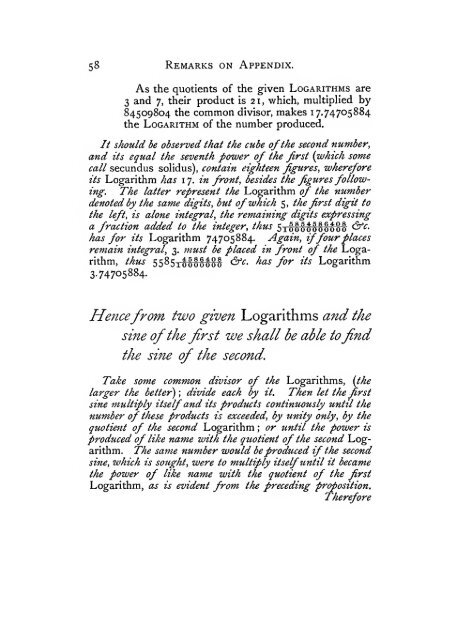
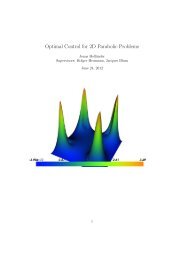
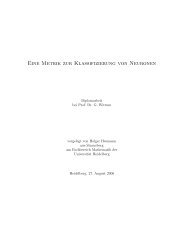
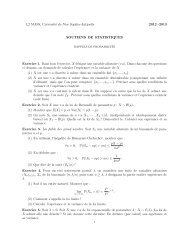
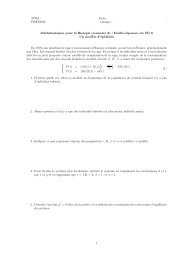


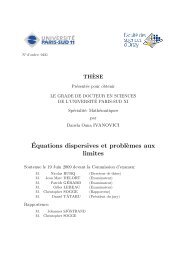
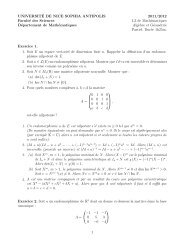
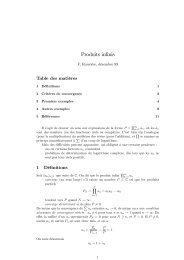
!['eries enti\`eres (+ [D78 Th d'Abel angulaire])](https://img.yumpu.com/14067031/1/184x260/eries-entieres-d78-th-dabel-angulaire.jpg?quality=85)

